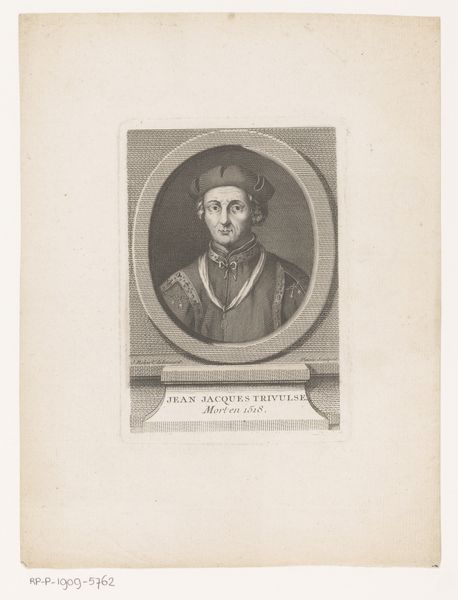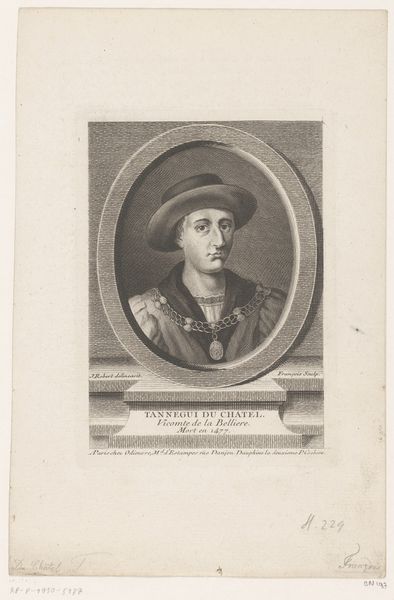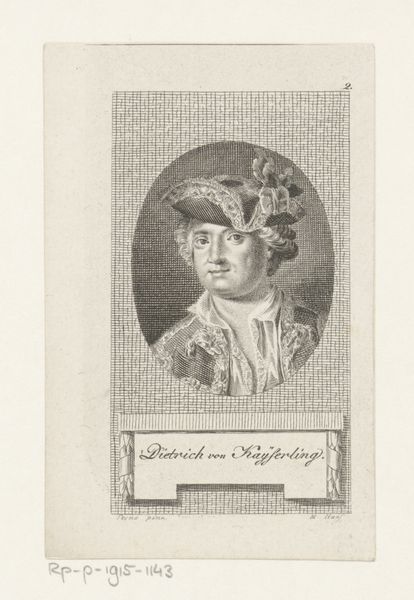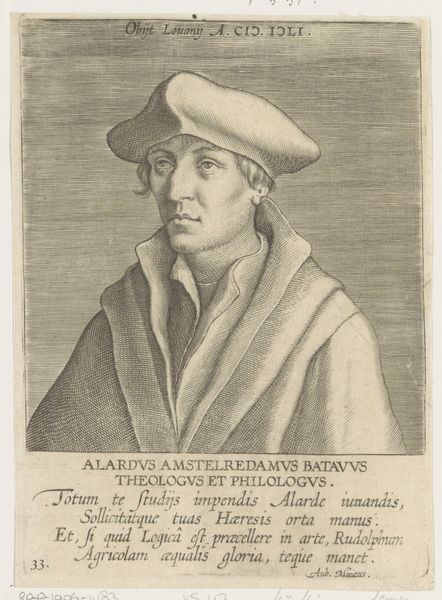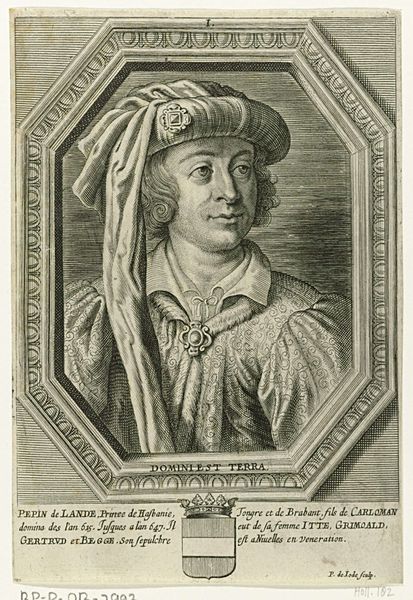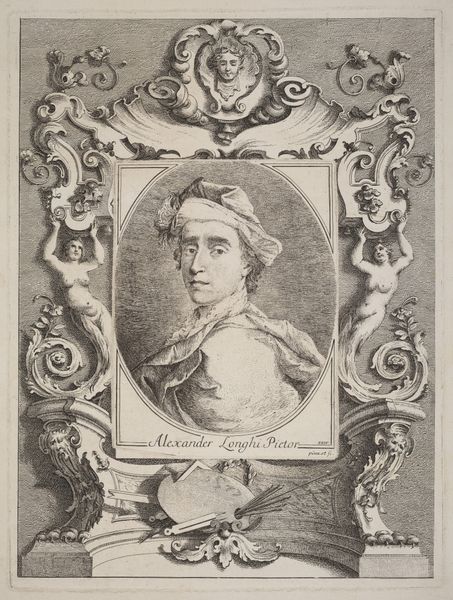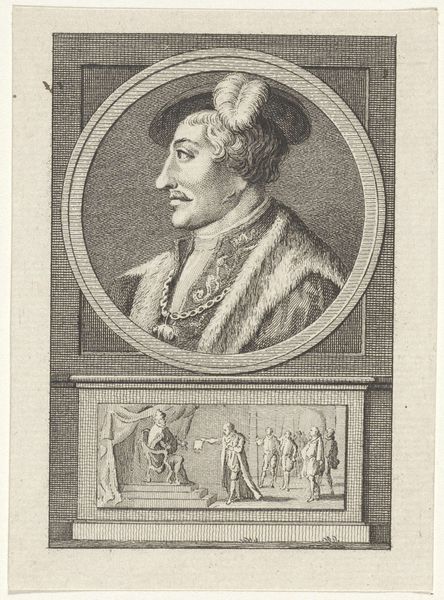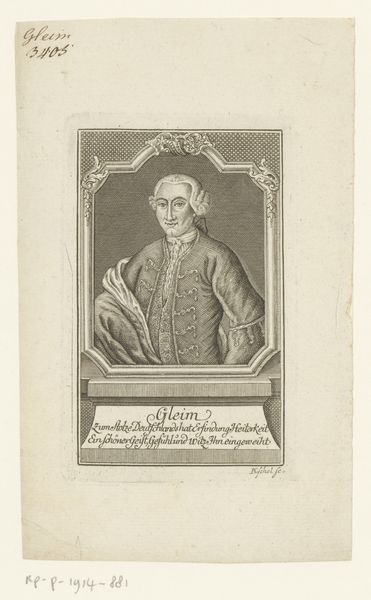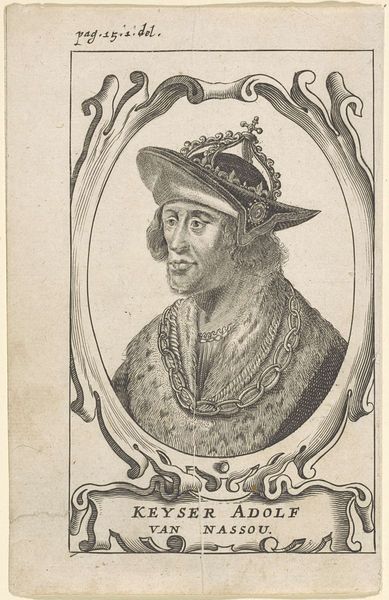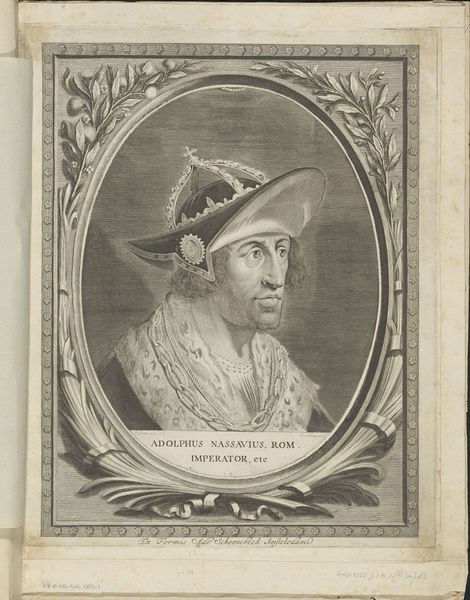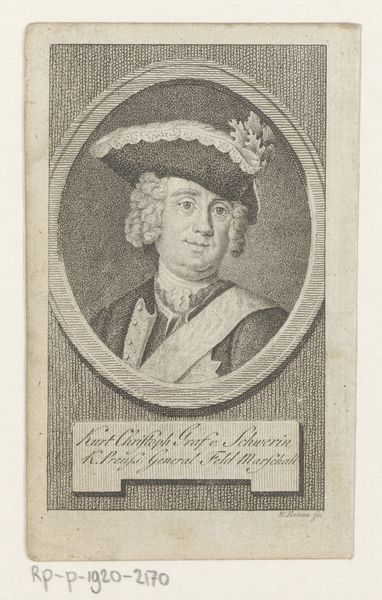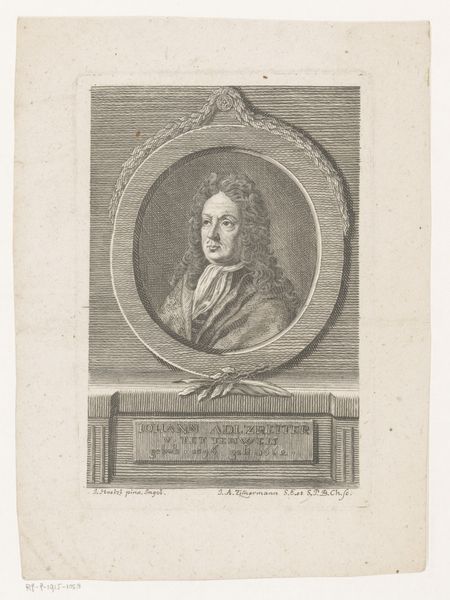
print, engraving
#
portrait
#
baroque
# print
#
old engraving style
#
historical photography
#
19th century
#
engraving
Dimensions: height 392 mm, width 255 mm
Copyright: Rijks Museum: Open Domain
Editor: So here we have Carlo Gregori’s “Portret van architect Guiseppe Ignazio Rossi,” created in 1727. It's an engraving, and there's something so striking about the subject's gaze. How would you interpret this work within its historical context? Curator: That gaze is certainly compelling. Given this is the 18th century, how do you see it functioning within the culture of the era? Think about the rise of the professional class and the importance of public image. Editor: Well, portraits at this time seem to elevate the individual, to declare their importance in society. The tools below him speak to his profession as an architect. Is this how architects presented themselves at the time? Curator: Precisely. Notice how Rossi is framed, both literally by the oval border and figuratively by the tools of his trade. It signifies a shift: architects moving from skilled laborers to recognized professionals with intellectual pursuits. The engraving allows for wider circulation of his image, serving almost as an advertisement for his capabilities, a statement of his standing in society. Editor: It's interesting how art served a marketing purpose even back then. Would a piece like this be commissioned by Rossi himself? Curator: More than likely. Or perhaps by a patron seeking to associate with his architectural prowess. Engravings such as these facilitated social networking and demonstrated power – symbolic power as much as economic. What is your reading of his attire, his presentation? Editor: It's not overtly aristocratic but suggests a comfortable position. The soft cap and open collar maybe speak to a learned, thoughtful identity rather than that of a nobleman? Curator: Good eye! And how might this challenge, or reinforce, existing social hierarchies of the time? This wasn’t just art; it was carefully crafted self-promotion in a rapidly changing world. Editor: I never really considered the social and political side of portraiture to this extent. I appreciate you helping me explore these avenues! Curator: My pleasure! Examining art within the historical landscape is key to appreciating the dialogue it creates with society.
Comments
No comments
Be the first to comment and join the conversation on the ultimate creative platform.
